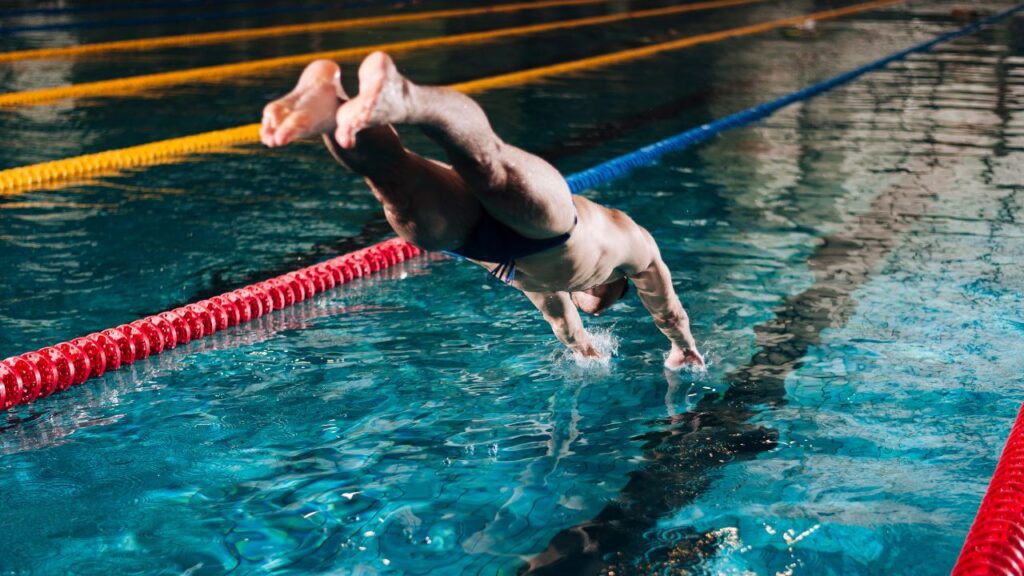The oxygen deprivation, while you are swimming, can cause you to feel exhausted. This feeling is not good, it can cause fatigue therefore which swimmer can lose their focus on the track, and also can fall into severe lung issues. However, you can try a few trips to improve your lung capacity at the time of your swimming. An improved lung capacity means you have more control over your lung.
Thus, you can gather more breath and more laps in each session. Not only that, but a good lung capacity will also give you more power (energy) and enhanced timing for each dive. After each session, the swimmer can feel relaxed and better with an increased lung capacity. Someone asked me a few days ago, how to increase Lung capacity for swimming!
It is already fixed in built by GOD! Yes, it is true, our lungs are default with their capability, but still, there are some tricks by which we can improve their activity. Do you want to know what these ways are? Okay, let’s follow here

7 Trips to increase the Lung capacity for swimming
Exercise enough
It is water activity by which you can ensure prolonged lung activity in the future. There are some aerobic activities in which you can increase lung activity. These muscle-strengthening exercises like walking, cycling, swimming, high jumping, etc. can increase the potentiality of the lungs. This kind of physical exercise helps to burn fat and reduce the cholesterol level thus improving both heart and lung performance.
Do meditation and yoga
Both these two are sorts of physical activities, by which you can learn how to control your physical activities more potentially. Every day spent a minimum of half an hour on meditation or yoga. Try to hold your breath as much as you can. So that when you are on underwater dive, you can hold your breath for more time.
Know Breath control technique
There are two breath control techniques by which you can be more potential in swimming, these two breath control sets are holding the breath for more time and breathing on short frequencies. A combination of this two-breath technique will teach you to increase lung potentiality in any scenario.
Know how to breathe
That may sound ridiculous! But I am not telling you to breathe at your normal time. When you are on the water, you have to know how to breathe properly so that you can hold your lungs performative for a long time. Suppose you are near to touching the board, and you are diving different dive, so do not take too much time to take your breath at this position.
At freestyle stroke, take a long breath before you change your head to another side. Before taking a breath also exhale fully. Analysis of your breath, whether you are on crawl or freestyle move-just pick the correct seconds when you can exhale and take an immediate breath.
Conserve oxygen
You can conserve more oxygen affording less on your leg. Try to give a light kick. The Human’s thigh is the broader area, which consumes a lot of oxygen. So, if you afford less there, you can save more oxygen for your next move.
Try No-breathers
No breathing means you are dead! But I am not intending to make you dead so early! However, if you blow out so quickly, that means you have to take the next breath too frequently. If you are not therefore on no-breathers, focus on the lighter kick.
The lighter kick you will give, the more no-breathers you will go for. To make the no breathers convenient, take a breath at every lap. Without taking a breath at every lap, it will be difficult to take non-breathers. A complete breath may not necessarily all-time to cover an entire lap. But you even cannot cover the whole lap without taking a breath.
That’s why try to go as much as you can, then try to exhale fully. After then take a full breath. You must know, you mandatorily need to take a minimum of 20 to 30 seconds rest at every lap on your no breathers move.
Do not exert force
Never push your lungs to make you fatigue under the water. If you forcefully hold your breath for a long time, you can get faint within a few seconds. If you hold your breath for more than normal, you can feel a burning sensation inside your chest, which is on the lungs. This happens because when you hold your breath for a longer time, your body produces lactic acid in the anaerobic condition inside the body.
Don’t worry, in the fresh air, you will get relief from this burning sensation. If the odd feeling accentuates, stop holding your breath and get the fresh air immediately.
FAQs
How do swimmers increase their lung capacity?
Challenge yourself at first! Try to beat you by holding your breath at your 4/5/6/7/8 strokes! Focus on two breaths set, hold the breath for a long time, and habituated on the short frequent breathing! Swimmers do a lot more things to increase lung capacity like- walking, jumping, and cycling, with some other breathing exercises.
Does holding your breath underwater increase lung capacity?
At an expert level, many swimmers practice holding their breath under the water. Though lung capacity varies person-wise, it’s a common practice for professional swimmers o increase lung capacity by holding their breath underwater. For the newbie, this way is not recommended.
Finally
Whatever we have written to increase your lung capability, please do not practice any of these if you are a newbie, and there is no expertise near your swimming pool. And one more thing, you have to lead a healthy life to make your lung more functional. Eat healthy food, and sleep time! This is all about how to increase lung capacity for swimming.
